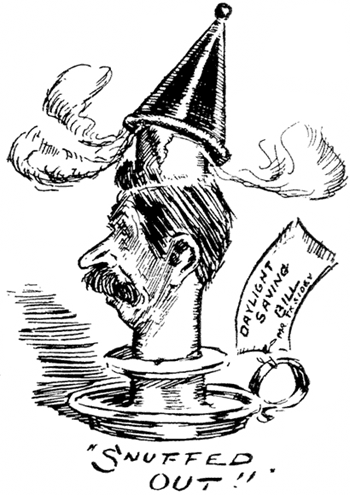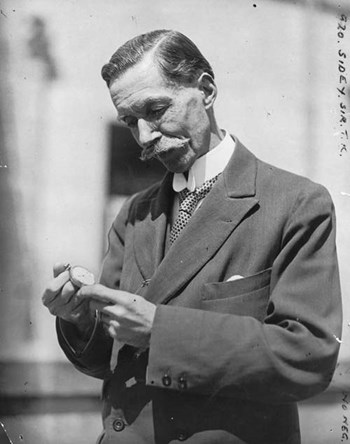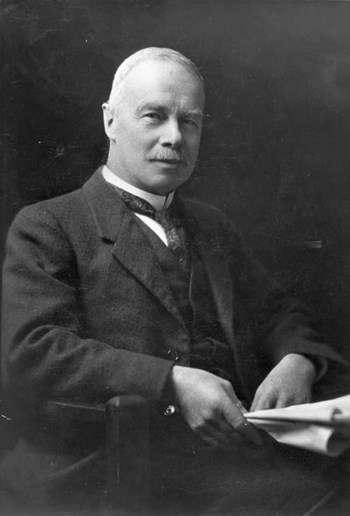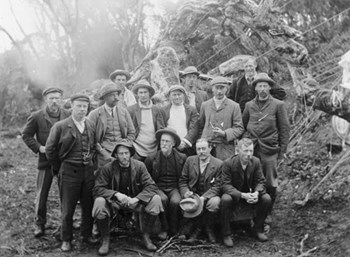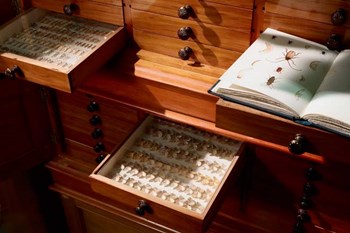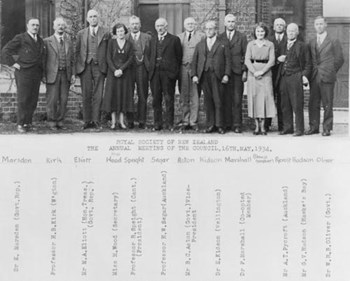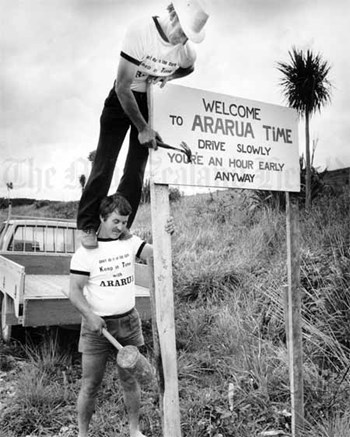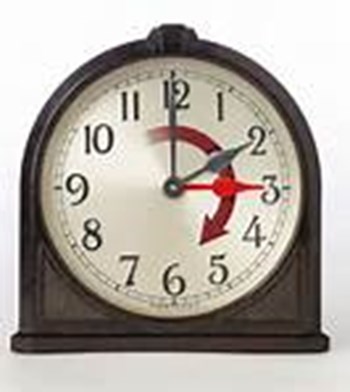George Hudson
Daylight Saving Time
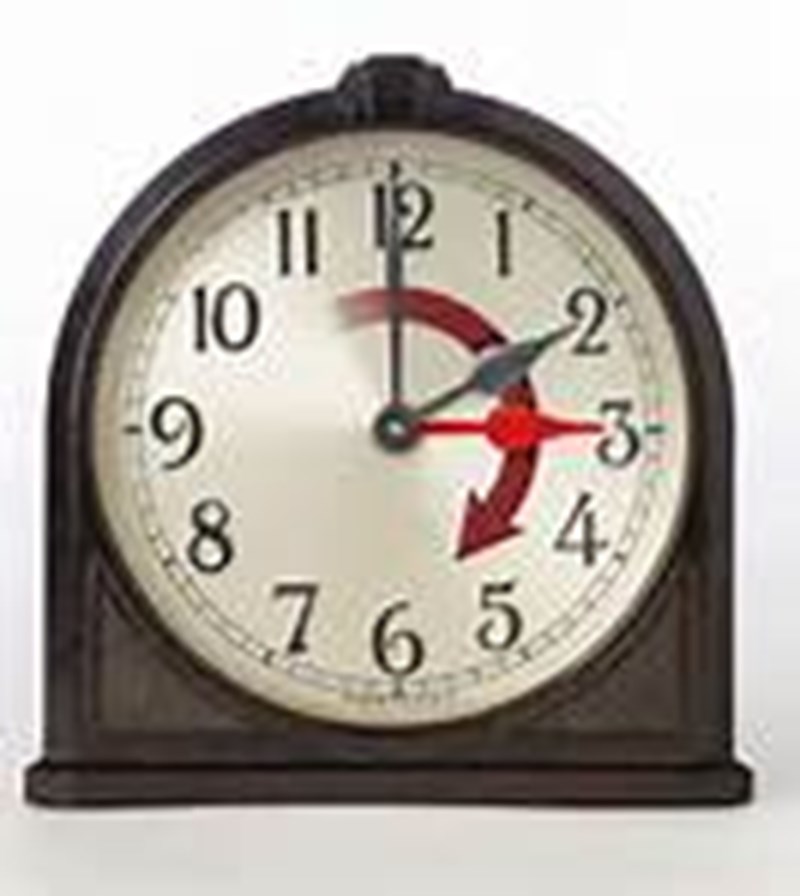
To have the audacity to play with the very idea of time itself is surely an exercise of extreme hubris. Yet that’s what George Vernon Hudson (b. 1867, d. 1946) proposed to do in 1895 when he suggested to the Wellington Philosophical Society that they consider moving the time around twice a year to accommodate the longer hours of summer.
What a preposterous notion! The idea was initially ridiculed by members of the society. One Mr Maskell said that ‘it was out of the question to think of altering a system that had been in use for thousands of years’. A Mr Travers (probably in a sarcastic tone) asked if the idea was to have clocks with two sets of hands; and one Mr Harding said that Hudson’s idea was wholly unscientific and impracticable. Mr Hudson replied that ‘he was sorry to see the paper treated rather with ridicule. He intended it to be practical. It was approved of by those much in the open air.’ And he sloped off to play with his insect collection.
For Hudson was, among other things, an entomologist. It had been this hobby, fitted in around his shift-work job, which had prompted his idea of changing the clocks; imagine if we could move time to enjoy the summer evenings. He wrote in his submission that a ‘long period of daylight leisure would be made available in the evening for cricket, gardening, cycling, or any other outdoor pursuit desired’. Clearly Hudson was a visionary – or someone who was hoping to get the entire country to change its clocks so that he had more time to collect butterflies after work.
Hudson was born in England but moved to New Zealand as a teen. Basing himself in Wellington, he wrote a number of books on insect fauna, and travelled on scientific expeditions to explore the wildlife of the subantarctic. He amassed the largest collection of insects in New Zealand (currently held at Te Papa), and as if that wasn’t enough, in 1918 he also discovered a new star, Nova Aquilae. Does this sound like a man who would let a good idea drop? No, it does not . . .
Far from being dead, Hudson’s ideas on ‘Seasonal Time-adjustment in Countries South of Lat. 30°’ started to take seed in the popular imagination, particularly in Christchurch among the, as he put it, ‘numerous classes, who are obliged to work indoors all day, and who, under existing arrangements, get a minimum of fresh air and sunshine’.
Thousands of copies of Hudson’s original paper were printed and circulated. Cantabrians started to take the whole idea of moving time around seriously. Luckily for all of us summer twilight cricketers, Hudson decided to give the idea another crack, and in 1898 he appeared before the stuffed suits of the Wellington Philosophical Society once again, with an updated, expanded and now well-supported paper. In his second appearance, Hudson acknowledged the critics and their arguments, but presented clear counter-arguments and persuasive reasoning for his case – it was a masterful piece of convincing.
While Hudson had suggested a two-hour shift, ultimately politician Thomas Kay Sidey was successful in ensuring we adopted a one-hour ‘daylight saving time’ (DST) adjustment in the summer of 1927. It took a long time to convince people that this new innovation would not unduly mess with people’s body clocks, or fade the curtains more!
But we were too late to be first – starting at the end of April 1916, Germany and its allies Austria-Hungary began using DST, in part to conserve coal during wartime – it’s unclear whether Kaiser Bill nicked the idea from Hudson or thought of it independently. Britain and most of its allies soon followed suit. Russia and a few other countries waited until the next year and the United States adopted it in 1918. While New Zealand was not the first to adopt daylight saving, Hudson is universally recognised as its inventor. Today, around 78 countries use daylight saving time.
Interestingly, daylight saving time continues to be a controversial topic, with some countries (and states within countries – I’m looking at you, Queensland) eschewing it completely, and others re-examining its usefulness. In the US, there is evidence that energy savings are minimal, and in fact that daylight savings and the changes in sleep cycles may mean lower productivity and increased risk of heart attacks. Sounds like scaremongering to me, by those jealous of our own Father Time.
More Information
George Vernon Hudson on Te Ara
